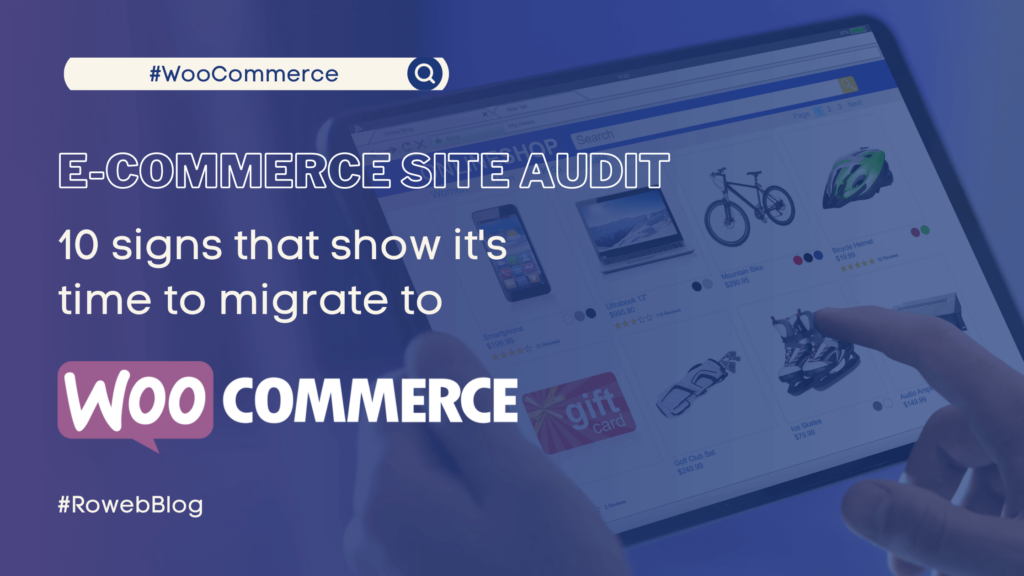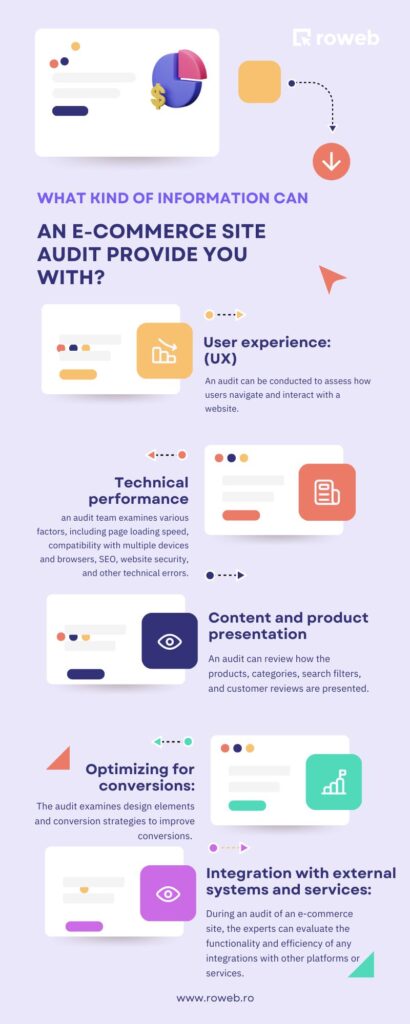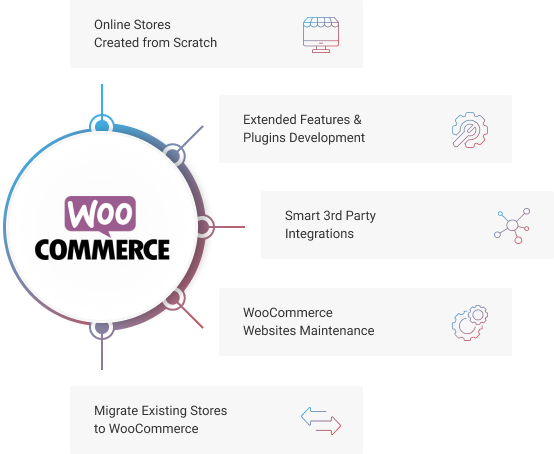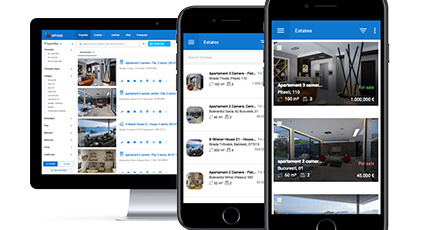
If your online shop performance is declining, and you have observed that:
- the loading time is excessively slow, and in this age of fast and efficient technology, customers may become impatient and decide to postpone or even cancel their shopping experience,
- the purchase process gets stocked, and you have more and more abandoned products in the shopping cart,
- you want to add new functionalities, but you don’t know what their impact will be on the purchasing process,
…it’s time for an e-commerce audit.
An e-commerce audit is conducted to assess the performance and efficiency of your online store or platform in detail. It provides a clear understanding of your current business status and helps identify areas of improvement.
With this idea in mind, you can make informed decisions to optimize and grow your business. Additionally, e-commerce consulting can help you prevent and solve potential issues.
And to make things a little clearer, here are some details about what the e-commerce consulting process entails and what kind of problems it can help you prevent or solve.
What kind of information can an e-commerce site audit provide you with?
An e-commerce audit can provide valuable information for online store owners. It can help identify and solve any issues, increase conversions, and improve the overall customer experience, ultimately leading to greater sales and success for the business.
See more details below.

User experience: In terms of user experience (UX), an audit can be conducted to assess how users navigate and interact with a website. This helps identify any challenges they may face, such as page structure, organization, design, functionality, search, purchase flow, and payment process.
Technical performance: Typically, an audit team examines various factors, including page loading speed, compatibility with multiple devices and browsers, optimization for search engines (SEO), website security, and identification of technical errors. This is crucial as technical errors can usually result in data leaks, which can harm users.
Content and product presentation: You can use an audit to evaluate the quality and relevance of product content, such as descriptions, images, prices, availability, and other important information. Additionally, you can review how the products, categories, search filters, and customer reviews are presented.
Optimizing for conversions: The audit examines design elements and conversion strategies to improve conversions. This includes assessing the clarity and visibility of action buttons, providing clear instructions for order completion, incorporating recommendation or customization features, and offering special deals.
Integration with external systems and services: During an audit of an e-commerce site, the experts can evaluate the functionality and efficiency of any integrations with other platforms or services. This includes payment systems, inventory management systems, analysis or marketing tools, and integration with social networks, among others.
Thus, an audit of an e-commerce site provides information about the current state of the site and recommendations to improve performance, user experience and business results.
E-commerce audit – 10 signs that indicate the need to migrate to WooCommerce

And now that we have established some benefits that an e-commerce site audit can offer you, migrating to an easy-to-manage platform that brings scalable results and provides a pleasant experience to users often turns out to be the next wisest decision.
For example, such a platform is WooCommerce. And if you are still trying to decide if you should migrate to a WooCommerce-type solution, here are some indicators that will help you confirm this decision.
Take a look at the list below, which gives you, at the same time, a perspective on the changes that such a platform can offer you.
The increased complexity of your solution: If your current e-commerce platform is becoming too complex to manage and customize, consider switching to WooCommerce. Their platform is more flexible and user-friendly. Plus, WooCommerce is worldwide known for being an easy-to-use e-commerce tool, even for those who don’t have advanced tech knowledge.
Integration with WordPress: If your site runs on WordPress and you want an easy-to-integrate e-commerce solution, WooCommerce is a natural choice. The tight integration between WordPress and WooCommerce facilitates the management and updating of content and products.
Extensibility and flexibility: WooCommerce comes with a wide range of extensions and plugins that allow customizing and expanding the functionalities of your online store. Thus, if you need advanced options or specific functionalities, WooCommerce may be a more suitable solution.
Scalability: If your online business is growing and you need a platform that can support a higher volume of transactions and visitors, WooCommerce can be a good option. You can effectively manage the growth of your business through WooCommerce.
Stock and inventory management: Managing a large product inventory can be made easy with WooCommerce’s efficient stock and inventory management tools. Adding details about each item is also simple and allows for including ample information.
Community Support: WooCommerce benefits from an active community and numerous developers who work on improving and expanding the platform. If you decide to manage the store on your own, you have access to rich documentation, forums and resources that can help you solve problems and get support. But if you choose to develop a more complex custom solution with the help of an experienced team, you don’t have to worry about updates or adding new functionalities.
Integration with third-party services: If you need integration with third-party services, such as payment solutions, delivery services or marketing tools, WooCommerce offers numerous extensions and plugins to facilitate these integrations.
Updates and security: If your current platform does not receive frequent updates and does not offer sufficient security measures, switching to WooCommerce may be a good idea. This platform is regularly updated to guarantee the safety and functionality of your website.
Lower costs: If paying for your current platform becomes expensive or if you pay for features you don’t use, migrating to WooCommerce can bring a reduction in costs. WooCommerce is an open-source platform, which means it’s free, and the costs are more related to the additional extensions and plugins you choose to use.
User experience: If you receive negative feedback from users regarding their experience on your existing website, switching to WooCommerce can improve aspects such as navigation, the payment process and the management of functionalities like shopping cart.

The bottom line? When it comes to finding an e-commerce solution, we provide the same advice to all our clients: it’s crucial to assess your current situation and determine the unique requirements of your business before deciding to switch to WooCommerce. Since each company is different, a custom approach is usually necessary.
Thus, for a more detailed assessment of your situation and to make sure that the migration will be beneficial for your business, consider reaching out to a software development team. They can provide you with helpful assistance and advice.




